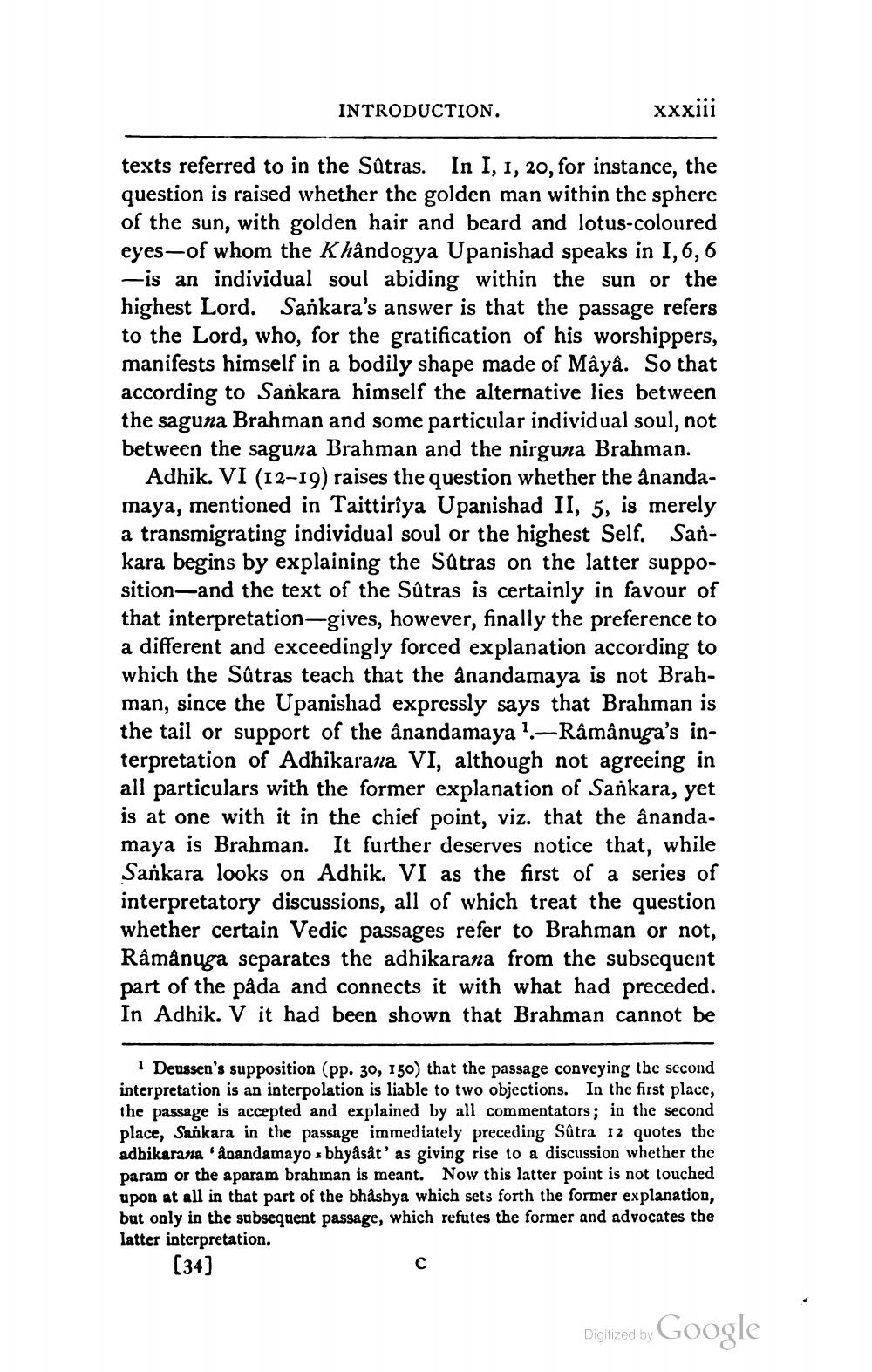________________
INTRODUCTION.
xxxiii
texts referred to in the Satras. In I, 1, 20, for instance, the question is raised whether the golden man within the sphere of the sun, with golden hair and beard and lotus-coloured eyes-of whom the Khândogya Upanishad speaks in 1,6,6 -is an individual soul abiding within the sun or the highest Lord. Sankara's answer is that the passage refers to the Lord, who, for the gratification of his worshippers, manifests himself in a bodily shape made of Mâyä. So that according to Sankara himself the alternative lies between the saguna Brahman and some particular individual soul, not between the saguna Brahman and the nirguna Brahman.
Adhik. VI (12-19) raises the question whether the anandamaya, mentioned in Taittirîya Upanishad II, 5, is merely a transmigrating individual soul or the highest Self. Sankara begins by explaining the Satras on the latter supposition-and the text of the Sûtras is certainly in favour of that interpretation-gives, however, finally the preference to a different and exceedingly forced explanation according to which the Sûtras teach that the anandamaya is not Brahman, since the Upanishad expressly says that Brahman is the tail or support of the ânandamaya !:-Râmânuga's interpretation of Adhikarana VI, although not agreeing in all particulars with the former explanation of Sankara, yet is at one with it in the chief point, viz. that the anandamaya is Brahman. It further deserves notice that, while Sankara looks on Adhik. VI as the first of a series of interpretatory discussions, all of which treat the question whether certain Vedic passages refer to Brahman or not, Râmânuga separates the adhikarana from the subsequent part of the pâda and connects it with what had preceded. In Adhik. V it had been shown that Brahman cannot be
Deussen's supposition (pp. 30, 150) that the passage conveying the second interpretation is an interpolation is liable to two objections. In the first place, the passage is accepted and explained by all commentators; in the second place, Sankara in the passage immediately preceding Sûtra 12 quotes the adhikarana 'anandamayo s bhyâsât'as giving rise to a discussion whether the param or the aparam brahman is meant. Now this latter point is not touched upon at all in that part of the bhashya which sets forth the former explanation, but only in the subsequent passage, which refutes the former and advocates the latter interpretation.
(34)
Digitized by Google




